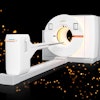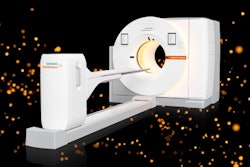
Australian researchers found F-18 MK-6240 is a promising new PET tracer for detecting early pathology associated with Alzheimer's disease, according to research presented June 14 at the annual meeting of the Society of Nuclear Medicine and Molecular Imaging (SNMMI).
Researchers sought to identify patterns and rates of tau accumulation in both a cognitively normal aging population and in those with Alzheimer's disease. They performed PET imaging with F-18 MK-6240 on all participants at baseline and after 12 months. After each scan, uptake of the radiotracer was measured in multiple areas of the brain.
Results suggest longitudinal tau imaging was effective in discriminating between the two cohorts. The uptake of new PET tracer was higher at baseline and after one year in participants who were on the Alzheimer's disease continuum compared with the cognitively normal aging participants.
F-18 MK-6240 was developed by Merck scientists and tested in animal studies in 2016.






![Coronal and axial slice of the average cortical F-18 MK-6240 SUVR [standard uptake value ratio] image for each study population. SUVR images were corrected for partial volume effects and masked with the gray matter mask used for volume of interest delineation. Overall tau accumulation is comparable between the late-life depression (LLD, middle column) and non-depressed cognitively unimpaired comparison (HC, left column) groups, while abnormal tau accumulation, which is most pronounced in the mesial temporal lobe, can be seen in the mild cognitive impairment due to Alzheimer's disease group (right column). Image and caption courtesy of the American Journal of Geriatric Psychiatry.](https://img.auntminnie.com/files/base/smg/all/image/2024/07/Tau_depressed.66a16540ee0a1.png?auto=format%2Ccompress&fit=crop&h=167&q=70&w=250)













